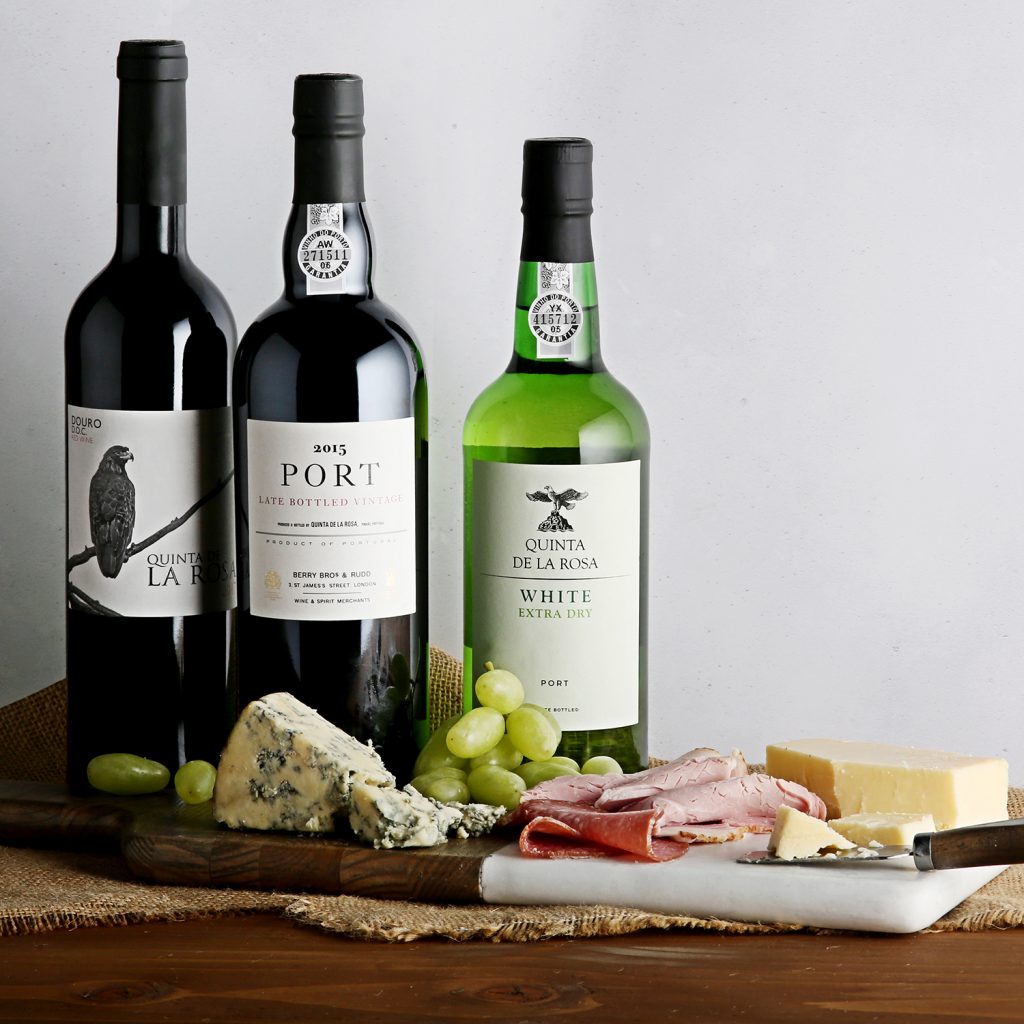The six Ports of Christmas
Author: Barbara Drew MW

Barbara Drew MW breaks down the different styles of Port, from well-known ruby and tawny styles to lesser-known white and pink styles. It may inspire you to explore a different kind of Port this Christmas.
Whilst steeped in ritual, Port is both an accessible drink, and, in my view, one of the best value wines in the world, with top vintage Ports costing a couple of hundred pounds. There is truly a Port out there for everyone and, contrary to popular belief, it is remarkably versatile. A small glass of one of the below will add a huge amount of flavour to your Christmas celebrations.
Whilst there are further variations on the below, these main six categories will help to narrow down the most appropriate Ports for you for the winter months, and, with luck, guide you to some new favourites.
WHITE
Oft-overlooked, this relatively rare wine (making up just a fraction of overall production in the Douro) is a gem. Made from a blend of native, and generally very aromatic, grapes such as Gouveio, Viosinho and Malvasia, it is often floral with a slightly nutty note. Whilst aged examples do exist, white Port is best drunk young and fresh, ideally with a splash of tonic and a slice of lemon. The perfect apéritif, particularly when paired with some salted almonds.
PINK
When first created by Croft, rosé (or pink) Port wasn’t permitted under the local regulations. After some creative legal work, it was eventually added as a category and other producers quickly brought out their own version. Made by a very rapid fermentation, this Port is all about highlighting the vibrant fruit flavours in the grapes – it’s perfect mixed with soda water and a slice of orange and served on a hot, sunny day, overlooking the Douro river. Failing that, crank up the heating and pretend you are somewhere warm and far away.
TAWNY
Whilst it is possible to make a tawny Port by blending white and red Port together, the best examples are the result of long ageing in large oak barrels called pipes. During this ageing process, over many years (an average of 10, 20, 30 or 40 years), the wine becomes paler and browner in colour (tawny), whilst the tannins soften and completely disappear and the wine starts to taste very nutty and chocolatey.
Even more crucially, because this wine has been slowly oxidised during its ageing process, it is virtually indestructible once open. This means you can keep an open bottle in your fridge at all times, even if you know no-one else who drinks Port, and have a glass with dense fruit puddings, chocolate desserts or cheese and nuts.
RUBY
Ruby Port covers a multitude of wine styles, ranging from a basic ruby, all the way up to vintage Port. If it starts out a shade of red when it’s bottled, then it’s ruby.
Of the ruby Ports that aren’t aged for long periods in bottle, choose a Reserve Ruby for bright red fruit flavours. The softer tannins in this style of wine make it a far better match for blue cheeses such as Stilton – where the firmer tannins of an LBV or Vintage Port can occasionally create clashes with heavily veined and spicy blues.
LBV PORT
Late-bottled vintage Ports are, in many ways, the best of all worlds. Made from some of the finest grapes grown in the Douro, they are full bodied, with much of the complexity and intensity of vintage Ports, but without the need for 30 years ageing. Having spent a short time ageing in oak before bottling they generally do not need decanting when serving either.
In fact, unlike vintage Ports which can be a little fragile, LBVs are fairly robust and can happily sit in a fridge for up to a week once open. Keep a couple of bottles up your sleeve for emergency cheese boards and nightcaps.
VINTAGE PORT
Often seen as the very pinnacle of Port production, these wines represent a tiny proportion of total production in the Douro. Dominated by the rare Touriga Nacional grape that grows best in the upper reaches of the Douro valley, these wines are made only in the best years. Designed to be aged for decades, these wines start out deeply coloured and intensely tannic; as they age in bottle they become paler in colour, with subtle and complex aromas of spice, herbs and fruits, with an incredibly silky texture.
Each house has their own particular style, with some being known for a sweeter, fruitier style (Graham) whereas others produce wines with a more herbal note (Warre). As these wines age, they develop a sediment, which needs to be removed before serving – resulting in a delicate dance of decanting. Once decanted, these beautiful and surprisingly fragile wines need to be drunk within 24 hours. Best shared with good friends.
Explore our selection of Christmas Port here.


